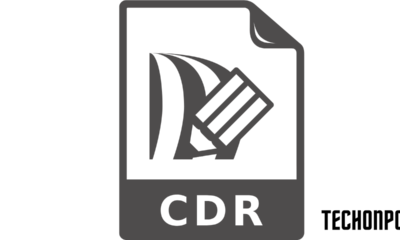Education
What Are the Best Ways to Improve Staff Productivity?
Published
1 year agoon
By
techonpc
Staff
Right now, improving staff productivity in the workplace is a challenge. Most workplaces have undergone drastic changes, of which some change how people work. For most workers, getting used to this method of working is a complete challenge.
In order to boost staff productivity, you must have a system, which drives motivation in your team as well as inspires them to put 100% effort into the things they do.
Currently, staff productivity and workers’ morale are very tough. In fact, most organization work from home. This means workers are subjected to numerous distractions, and lack of connection will be harmful to productivity.
Simply telling your workers to be productive can’t do anything in a workplace. You have to be proactive when it comes to your thoughts. You must inspire your workers, guide them, and, if possible, implement the following strategies:
1. Emphasize Business Culture
A business culture consists of a few key elements. These include goals, work environment, vision, and ethics. Some studies show that staff productivity increases in a work environment which emphasizes reward teamwork and relationship building. In contrast, businesses that concentrate on individual success and hierarchies derail productivity.
In order to improve this productivity in a workplace, you should improve your hiring practices as well as ascertain that new workers work well with others. This helps to motivate and energize your workers.
2. Use Communication Solutions
Because of the unprecedented times, productivity is among the main concerns for every business organization. Holistic approaches, experienced staff, and innovative ideas are only valuable if your business can accomplish its goals and complete projects on time.
In these times of remote working, phone systems can help your business to be productive. They have replaced one-on-one conversations and allow workers to work towards their goals and continue working on projects.
If your business considers using a softphone, all the calls will be connected through the internet. An effective business softphone system will also enable your business to move phone calls from the PBX environment to a wireless, GSP, or Wi-Fi network.
3. Improve Onboarding of Workers
Most employers have the mindset that once contracts are signed, it will be a guarantee their new workers shall remain loyal. However, the talent of this new generation doesn’t believe in traditional working attitudes. In order to positively and effectively integrate them into a business culture, it will be best to have effective onboarding programs.
Because of an ineffective plan for onboarding, employers lose around 18% of new appointments in the first three months. On the other hand, great onboarding programs help increase retention by about 50%.
The major components of onboarding consist of complete support, wide-ranging training, and feedback. Another vital aspect a business must consider is to make a communication network easy and strong for workers to know more about their workmates.
4. Consider Matching Tasks to Working Skills
Knowing behavioral styles and employees’ skills is important when it comes to maximizing efficiency. For instance, creative, extroverted, and out-of-the-box thinkers are perfect people to pitch some ideas to customers. But they may struggle if they are assigned a more detail-oriented and rule-intensive task.
It isn’t enough to ask your workers to be good at everything they do. Instead, before you assign your employees tasks, ask yourself whether they’re best suited to handle the task. And if not, look for someone else whose styles and skills match your requirements.
5. Minimize Distractions
It is hard to concentrate on important tasks and beat deadlines in a workplace with a lot of distractions. Some studies show that distractions are the greatest productivity killer. Before, the major forms of distractions used to be telephone calls or knocking on the door. But these days, the tools you use to work could be a distraction.
You have to eliminate or minimize these distractions in the workplace. Advise your employees to also turn off the TV, put their smartphones away, and turn off the computer notifications.
6. Take Action to Minimize Burnout
Workers often perform at their best when their mind is fully preoccupied with unaccomplished tasks. Plus, they will hardly beat deadlines in such a situation.
Being unable to manage your workers and feeling worthless will make your workers panic, leading to decreased productivity levels. So as an employer, you must be considerate of the whole situation.
One of the best ways to achieve this is to make sure your employee is manageable. Instead, consider carrying out a fun session to avoid burnout.
You may offer PTO (paid time off) or even mandatory vacations so they may sit and relax.
7. Give Workers an Environment They May Thrive Personally
During the global pandemic, Covid-19, working experts got an opportunity to try several ways of working. Now more than before, people have become free to work how it suits them. These are among the most important workplace shifts that business leaders may embrace to boost productivity and morale.
Remote work often allows workers to have more time in the day as well as attain a better life-work balance. And at the same time, it alleviates stress, avoids personal costs, and eliminates commutes linked to going to your office. Most workers prefer this kind of lifestyle and report that it has made them even more productive.
A person’s productivity may thrive well in a hybrid arrangement. Plus, their work can incorporate other types of workplace flexibility, like shortened work weeks, a flexible schedule, or autonomy over the day.
8. Develop Family-Like Surroundings
This does not mean that you treat your workers the way you treat your brother, sister, dad, or mom. Rather, this is about developing a family-like environment where workers feel respected and safe.
Ensure your workers know that you will always have their back and help them celebrate success, irrespective of how you feel about them.
In a Nutshell!
Improving worker productivity in a workplace often starts with strong employee monitoring tools and great analytic strategies.
Your workers will likely respond differently to your strategies, depending on their individual histories and preferences.
But you may improve their responses by knowing their strengths and weaknesses, personal preferences, and intrinsic motivation.
Follow Me

Unleashing the Power of the Office Accelerator: Maximizing Productivity and Efficiency in the Workplace with Office 365 Accelerator

Unlocking the Hidden Potential of Your Website: Strategies for Growth

From AI to VR: How Cutting-Edge Tech Is Reshaping Personal Injury Law in Chicago
Trending

 Microsoft4 years ago
Microsoft4 years agoMicrosoft Office 2016 Torrent With Product Keys (Free Download)

 Torrent4 years ago
Torrent4 years agoLes 15 Meilleurs Sites De Téléchargement Direct De Films 2020

 Money3 years ago
Money3 years ago25 Ways To Make Money Online

 Torrent4 years ago
Torrent4 years agoFL Studio 12 Crack Télécharger la version complète fissurée 2020

 Education3 years ago
Education3 years agoSignificado Dos Emojis Usado no WhatsApp

 Technology4 years ago
Technology4 years agoAvantages d’acheter FL Studio 12

 Technology4 years ago
Technology4 years agoDESKRIPSI DAN MANFAAT KURSUS PELATIHAN COREL DRAW

 Education3 years ago
Education3 years agoBest Steph Curry NBA 2K21 Build – How To Make Attribute, Badges and Animation On Steph Curry Build 2K21

You must be logged in to post a comment Login